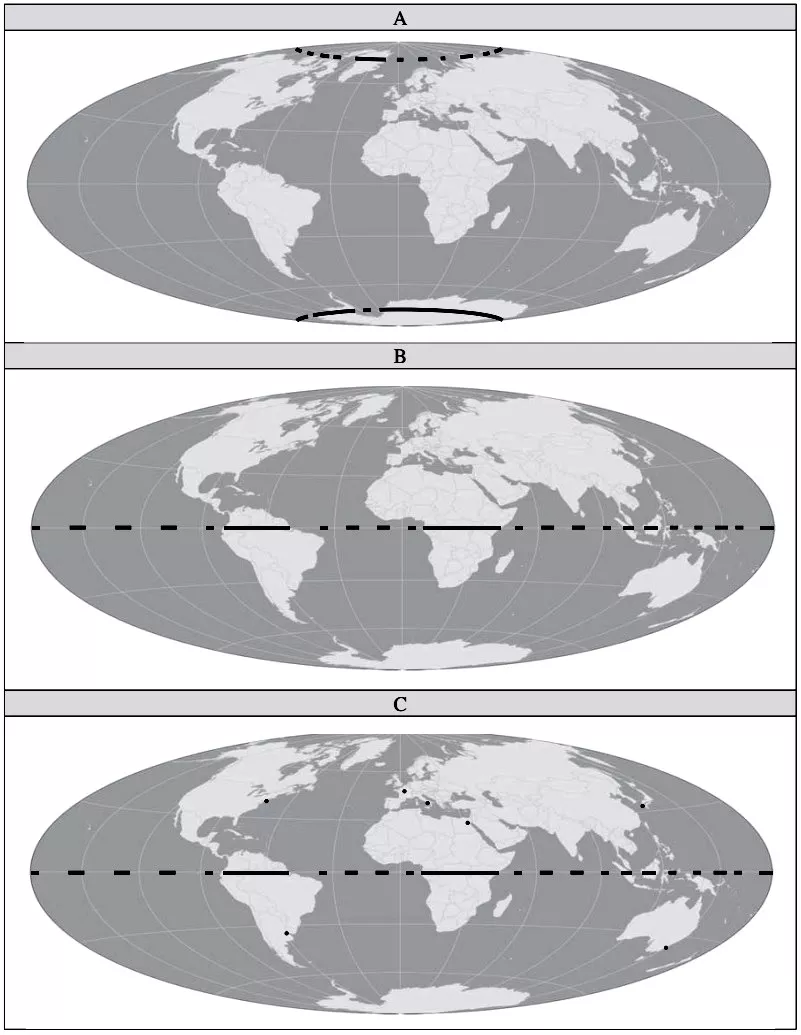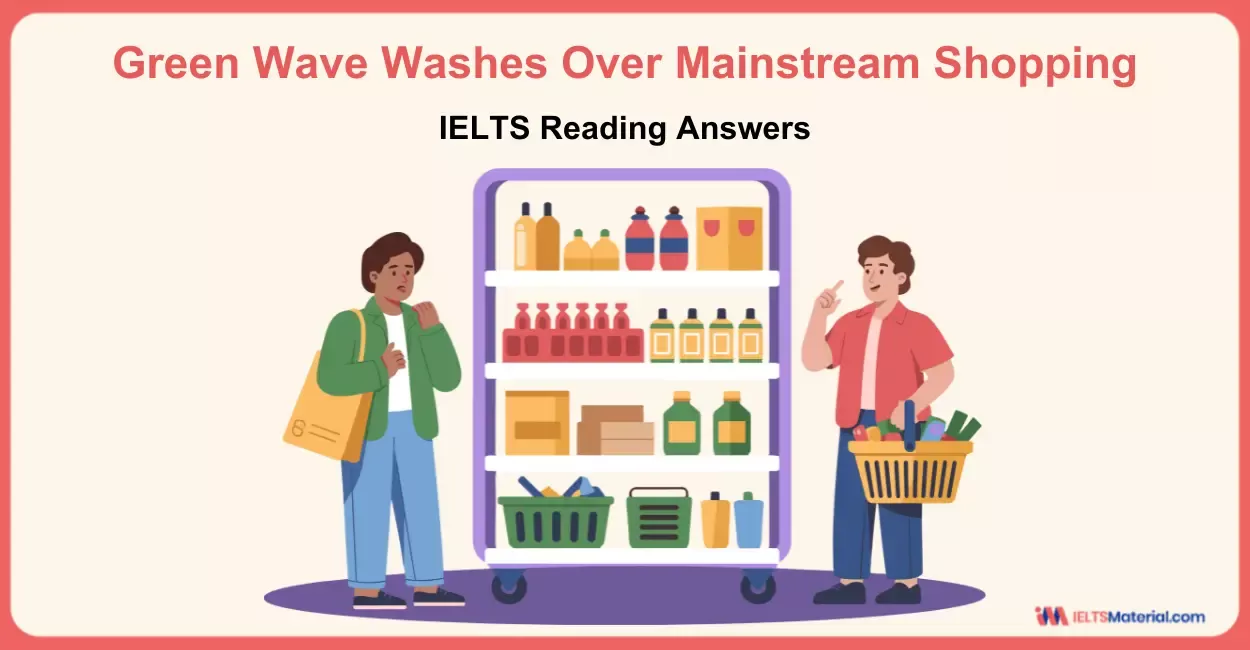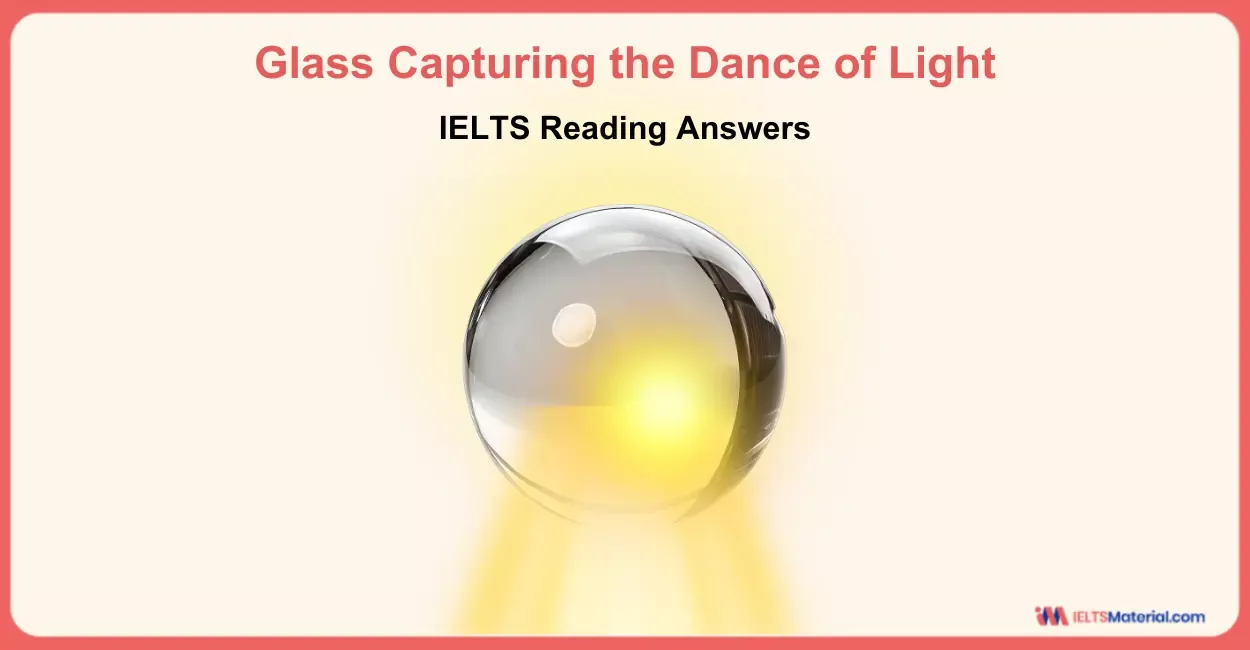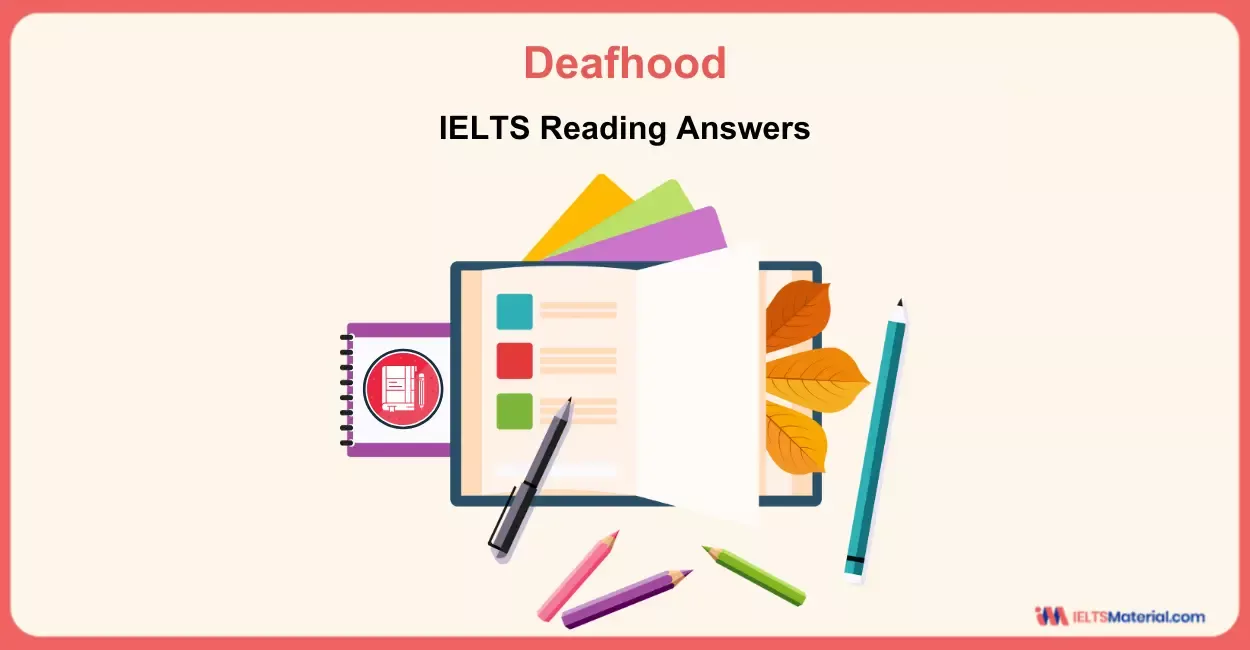Space-Based Solar Power – IELTS Reading Answers
12 min read
Updated On
-
Copy link
Ace the IELTS Reading section with the passage on ‘Space-Based Solar Power’ and learn the steps to answer Multiple Choice, True/False/Not Given, and Diagram completion questions. Check out the correct answers along with explanations to improve accuracy.
Table of Contents

Limited-Time Offer : Access a FREE 10-Day IELTS Study Plan!
The ‘Space-Based Solar Power’ is an IELTS Academic Reading passage and is a good resource for you while preparing for the IELTS Reading test. This passage will help you understand what kind of reading passages you will encounter and the questions that you will be asked to solve. The topic dives into science and technology which requires skills to carefully read, comprehend difficult concepts, and recognize the details that support the arguments. Practicing with IELTS Reading passages would help to foster your time management skills by attempting this under exam conditions. Achieve a band 8+ through sharpening your skimming and scanning abilities so that you can locate information promptly.
Connect with our band 9 IELTS Trainers to crack your IELTS Reading in no time! Book a FREE Demo.
Types of Questions in IELTS Reading Passage ‘Space-Based Solar Power’
To prepare for the IELTS Reading, review the types of questions and difficulty level you’ll encounter. As you prepare yourself, it is suggested that you focus on improving skills for individual questions. This will elevate your knowledge so that you can answer any questions in the reading topic. The question types in this IELTS Reading Passage are mentioned below:
- IELTS Reading Multiple Choice Questions (Q. 28 & Q.40)
- IELTS Reading True False Not Given (Q. 29 – 32)
- IELTS Reading Diagram Completion (Q. 33 – 39)
Steps for Answering the IELTS Reading Passage ‘Space-Based Solar Power’
As you prepare yourself with the passage on ‘Space-Based Solar Power’, you get to learn more about scientific terms and complicated ideas. With the proper technique, you will be able to tackle the passage with ease for getting a higher IELTS Band Score of 8+. By using the following strategies for each question type, your reading speed will increase and you will improve on your comprehension skills.
|
Question Type |
Steps to Follow |
|
Multiple Choice Questions |
|
|
True False Not Given |
|
|
Diagram Completion |
|
Curious to learn how to improve your reading skills to get a band 9? Check out the video below!
IELTS Reading Passage on ‘Space-Based Solar Power’
You should spend about 20 minutes on Questions 29-40 which are based on the Reading Passage below.
Space-Based Solar Power
In an energy-hungry world, new safe ways to generate electricity are constantly being sought. Space-based solar power, or SBSP, is not yet up and running, but several space agencies and commercial companies are keenly pursuing it.
SBSP is a system that would harness sunlight in space, convert it into electrical energy, and beam this to receivers in the Earth’s equatorial zone. SBSP satellites would be in low orbit 1100 kilometres (684 miles) above the Earth.
Advantages
To date, solar energy has been collected on the ground, but it is estimated there is 144% more solar power available in space as the Earth’s atmosphere absorbs light. Furthermore, since our planet rotates, energy can only be collected during daylight. It is possible at the poles to collect light almost continuously in summer, but in winter such plants cannot operate due to snow, ice, and darkness. In space, however, solar power collection could occur around the clock. A further benefit may be that the energy produced could be directed to multiple locations whereas terrestrial power plants are limited to sending power one way into a grid.
Design
Most prototypes of SBSP structures look like a giant tent hanging in space. Its light, hollow equilateral triangular frame is 336 metres (1103 feet) long while its depth is 303 metres (994 feet). Down two sides are solar collectors, called arrays; on the floor of the ‘tent’ sit a solar converter and a transmitting antenna. The antenna sends microwaves to Earth. These waves are at a frequency of 2.45-5.8 gigahertz, or somewhere between infrared and radio signals. They pass through Earth’s atmosphere easily with only minor energy loss. On Earth, the invisible column of microwave energy – perhaps two to three kilometres (a mile or two) wide – is received by a large oval-shaped ‘rectenna’ – a new word combining ‘rectifying’ + ‘antenna’. A pilot beam, also on Earth, ensures the satellite stays in position in space.
Two major technical obstacles remain before SBSP becomes a reality. The first is launching satellites into orbit. While most scientists favour low orbit, others believe a higher orbit like 36,050 kilometres (22,400 miles), about one-tenth of the distance between Earth and the Moon, would harness more sunlight. However, no agency or company has any experience of launching and controlling a satellite in high orbit, and the cost would be exorbitant. The second problem is the wireless power transmission. While this seemed like a physicist’s fantasy a few years ago, in 2009, US and Japanese researchers successfully sent microwave energy between two islands in Hawaii which are 145 km (90 miles) apart – equidistant to Earth’s atmosphere – but it is unknown whether this can be reproduced in space.
History
SBSP is not a new idea. Dr Peter Glaser designed a system in the late 1960s and was granted a US patent in 1973. The US Department of Energy in conjunction with NASA (the American space agency) conducted feasibility studies in the 1970s, but a conservative administration in the 1980s discontinued investment. Only in 1997 did the US government reconsider the idea.
In 2009, an American commercial company Space Energy Incorporated announced it planned to provide SBSP ‘within a decade’. Subsequently, a company called Solaren stated it was likely to provide 200 megawatts of solar power from an SBSP to Pacific Gas and Electric from 2016. PowerSat Corporation has begun the process of patenting a system of interconnected satellites that will project one extremely powerful microwave beam down to Earth. It has also developed a special thruster to lift a satellite from low orbit into a higher orbit.
Small-scale scientific projects connected to SBSP have long been in operation in Europe. In 2010, several private European firms joined the space power race, and scientific conferences were held on electromagnetic wireless transmission in Italy and Germany.
Japanese initiatives
It is the Japanese, however, who have come nearest to producing a reliable system. Both Mitsubishi Electric Corporation and IHI Corporation currently fund research. Since 1998, JAXA (the Japanese space agency) has been involved in all aspects of SBSP, and it predicts its first satellite will be in orbit by 2030.
There are six broad areas that JAXA is working on. These are (1) general configuration; (2) assembly work and operation; (3) solar array; (4) transmitting antenna; (5) power transmission and reception system; and, (6) testing methods. The first of these is the most developed. The solar array and transmitting antenna are second in terms of development. Testing methods are relatively unsolved. Assembly work and operation, and power transmission and reception system remain far from being solved.
Disadvantages
SBSP has numerous detractors. There are those people who imagine the microwave beam to be something like a science-fiction death ray. Physicists reassure the public it is a non-ionising wave, like a radio wave or x-ray. It cannot displace electrons from atoms to charge particles, so it does not damage DNA. The waves may be slightly warm, but they present no danger to wildlife or humans.
Other opponents of SBSP say that while there is neither corrosion nor damage from plants or animals in space, background radiation could harm the satellite. There is the very real danger of collision with space junk as recently happened at the International Space Station, or with small meteors’ hitting it. The less likely event of an enemy nation firing rockets to destroy the equipment also causes concern. Repairing an unmanned structure so far from Earth would be extremely difficult.
Solar power via the Moon is an option which some scientists say can be in operation in ten years at a fraction of the cost.
But the majority of those against SBSP consider it expensive and unnecessary given that many other forms of renewable energy on Earth are operating successfully. Terrestrial solar power is relatively underdeveloped; the Arizona Desert in the US, and deserts across North Africa provide easily-accessible locations for new systems that would be five times more cost-effective than SBSP.
Viability
Nevertheless, as energy requirements accelerate, as unrest in oil-producing regions and nuclear accidents make alternative energy more attractive, space-based solar power may have the future after all.
Question 28
Which map below – A, B, or C – best illustrates the most effective zone for Space-based Solar Power (SBSP) receivers?
Write your answer in box 28 on your answer sheet.

Questions 29-32
What are the following statements according to information in the passage?
In boxes 29-32 on your answer sheet, write:
TRUE if the statement agrees with the information
FALSE if the statement contradicts the information
NOT GIVEN if there is no information on this
29 Solar energy would be beamed down to Earth in SBSP.
30 SBSP satellites would orbit 100 kilometres above the Earth.
31 Unlike terrestrial solar power collection, SBSP satellites could collect sunlight 24 hours a day all year round.
32 SBSP may be sent to anyone who has a rectenna.
Questions 33-36
Label the diagram below.
Choose ONE WORD OR A NUMBER from the passage for each answer.
Write your answers in boxes 33-36 on your answer sheet.

Questions 37-39
Label the diagram below.
Choose TWO WORDS from the passage for each answer.
Write your answers in boxes 37-39 on your answer sheet.

Question 40
Choose the correct letter: A, B, C, or D.
Write the correct letter in box 40 on your answer sheet.
Which represents the view of most critics of SBSP?
- It is a fantasy of physicists, and impossible to build.
- Dangers in space mean satellites could easily be destroyed.
- It is better to concentrate on clean energy production on Earth.
- Oil and nuclear energy are cheaper in the short term.
Join our IELTS online classes for expert guidance. Sign up today!
Answer with Explanation for ‘Space-Based Solar Power’
Well done! Did you put the timer on? Now, it is time for you to compare your answers with the correct ones and carefully look at the explanation and location of keywords. This will enhance your comprehension skills and get you closer to your desired IELTS Band Score. Below is a table with answers for the passage on ‘Space-Based Solar Power’ along with explanations and location of keywords.
|
Question number |
Answer |
Explanation |
Location of keywords |
|
29 |
B |
SBSP is a system that would harness sunlight in space, convert it into electrical energy, and beam this to receivers in the Earth’s equatorial zone. |
Introduction; Line 3 |
|
30 |
FALSE |
On Earth, the invisible column of microwave energy – perhaps two to three kilometres (a mile or two) wide – is received by a large oval-shaped ‘rectenna’ – a new word combining ‘rectifying’ + ‘antenna’ |
Design; First para, Line 7 |
|
31 |
FALSE |
SBSP satellites would be in low orbit 1100 kilometres (684 miles) above the Earth. |
Introduction; Last line |
|
32 |
TRUE |
In space, however, solar power collection could occur around the clock. |
Advantages; Line 4 |
|
33 |
NOT GIVEN |
– |
– |
|
34 |
336 |
It’s light, the hollow equilateral triangular frame is 336 metres (1103 feet) long |
Design; First para, Line 2 |
|
35 |
converter |
Down two sides are solar collectors, called arrays; on the floor of the ‘tent’ sit a solar converter and a transmitting antenna. |
Design; First para, Line 3 |
|
36 |
Microwaves |
The antenna sends microwaves to Earth. |
Design; First para, Line 4 |
|
37 |
rectenna |
On Earth, the invisible column of microwave energy – perhaps two to three kilometres (a mile or two) wide – is received by a large oval-shaped ‘rectenna’ – a new word combining ‘rectifying’ + ‘antenna’. |
Design; First para, Line 7 |
|
10 |
General configuration |
There are six broad areas that JAXA is working on. These are (1) general configuration; |
Japanese initiatives; Second para, Lines 1- 2 |
|
38 |
Solar array |
There are six broad areas that JAXA is working on.(3) solar array; |
Japanese initiatives; Second para, Lines 1 – 2 |
|
39 |
testing methods |
There are six broad areas that JAXA is working on.(6) testing methods. |
Japanese initiatives; Second para, Lines 1- 2 |
|
40 |
C |
Terrestrial solar power is relatively underdeveloped; the Arizona Desert in the US, and deserts across North Africa provide easily-accessible locations for new systems that would be five times more cost-effective than SBSP. |
Disadvantages; Last para, Last line |
Join our IELTS webinars to learn master tips for the Reading section! Click here to explore!
With passages such as ‘Space-Based Solar Power’, you would get better at finding keywords and interpreting different types of questions correctly. Always remember to check your responses and compare it with the correct answers so that you can improve your analysis and comprehension skills. With constant practice, you would become more confident on the test day and get a band 8+ in this section.
Check More IELTS Reading Answers
Also check :
Practice IELTS Reading based on question types

Start Preparing for IELTS: Get Your 10-Day Study Plan Today!
Explore other Reading Practice Tests

Nehasri Ravishenbagam

Nehasri Ravishenbagam

Kasturika Samanta

Kasturika Samanta
Recent Articles

Nehasri Ravishenbagam

Haniya Yashfeen

Haniya Yashfeen

Haniya Yashfeen




Post your Comments